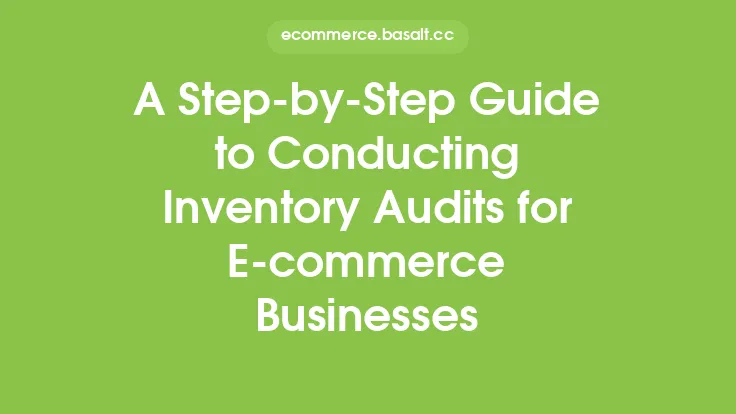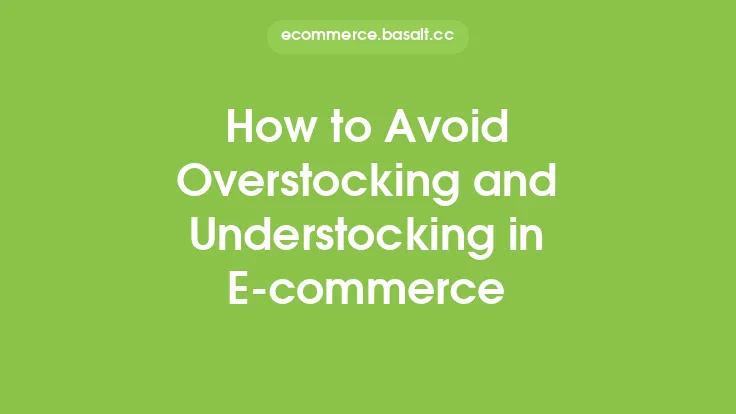Conducting a comprehensive e-commerce SEO audit is a crucial step in identifying areas of improvement and optimizing your online store for better search engine rankings and increased conversions. An SEO audit is a thorough analysis of your website's structure, content, and technical aspects to ensure they are aligned with search engine algorithms and best practices. In this article, we will guide you through the process of conducting an e-commerce SEO audit, highlighting key areas to focus on and providing actionable tips to improve your website's visibility and performance.
Introduction to E-commerce SEO Audits
An e-commerce SEO audit is a detailed examination of your website's search engine optimization strategy, aiming to identify strengths, weaknesses, opportunities, and threats. The audit process involves assessing various aspects of your website, including technical SEO, content, user experience, and backlinks. The primary goal of an SEO audit is to provide a roadmap for improvement, helping you to increase your website's visibility, drive more traffic, and boost conversions.
Technical SEO Audit
The technical SEO audit is a critical component of the overall audit process. It involves evaluating your website's technical aspects, such as site speed, mobile responsiveness, SSL encryption, and XML sitemaps. A technical SEO audit should include:
- Site speed analysis: Use tools like Google PageSpeed Insights or GTmetrix to assess your website's loading speed and identify areas for improvement.
- Mobile responsiveness check: Ensure your website is optimized for mobile devices, as this is now a key ranking factor.
- SSL encryption verification: Confirm that your website has a valid SSL certificate, as this is a requirement for secure browsing and a ranking signal.
- XML sitemap review: Verify that your website has a valid and up-to-date XML sitemap, which helps search engines understand your website's structure.
Content Audit
A content audit is essential to ensure your website's content is high-quality, relevant, and optimized for search engines. The content audit should include:
- Content inventory: Create a comprehensive list of all content on your website, including product pages, blog posts, and category pages.
- Content quality assessment: Evaluate the quality of your content, considering factors like uniqueness, relevance, and engagement.
- Keyword research: Conduct keyword research to identify relevant and high-traffic keywords, and ensure your content is optimized for these terms.
- Content gap analysis: Identify gaps in your content strategy, including missing pages, outdated content, or areas where you can create new content to attract more traffic.
User Experience Audit
The user experience (UX) audit is vital to ensure your website provides a seamless and engaging experience for visitors. The UX audit should include:
- Navigation and information architecture review: Assess your website's navigation, category structure, and information architecture to ensure it is logical and easy to use.
- Page layout and design analysis: Evaluate your website's page layout, design, and visual elements to ensure they are consistent, visually appealing, and optimized for conversions.
- Mobile usability testing: Test your website on various mobile devices to ensure it is responsive, easy to use, and provides a good user experience.
- Conversion rate optimization (CRO) analysis: Identify areas for improvement in your website's conversion rates, including calls-to-action, forms, and checkout processes.
Backlink Audit
A backlink audit is essential to ensure your website's backlink profile is healthy and free from spammy or low-quality links. The backlink audit should include:
- Backlink analysis: Use tools like Ahrefs or Moz to analyze your website's backlink profile, including the number of links, link quality, and anchor text distribution.
- Link quality assessment: Evaluate the quality of your backlinks, considering factors like relevance, authority, and spam score.
- Link removal and disavowal: Identify and remove or disavow low-quality or spammy links that could be harming your website's rankings.
Audit Tools and Resources
To conduct a comprehensive e-commerce SEO audit, you will need a range of tools and resources. Some essential tools include:
- Google Search Console: A free tool that provides insights into your website's search engine rankings, traffic, and technical issues.
- Google Analytics: A free tool that provides insights into your website's traffic, behavior, and conversion rates.
- Ahrefs: A paid tool that provides comprehensive backlink analysis, keyword research, and content audit capabilities.
- SEMrush: A paid tool that provides technical SEO audits, competitor analysis, and keyword research capabilities.
- Moz: A paid tool that provides comprehensive SEO audits, keyword research, and backlink analysis capabilities.
Implementing Audit Recommendations
Once you have completed your e-commerce SEO audit, it is essential to implement the recommended changes and improvements. This may involve:
- Technical SEO improvements: Implementing technical SEO recommendations, such as site speed optimization, mobile responsiveness, and SSL encryption.
- Content creation and optimization: Creating new content, optimizing existing content, and ensuring all content is high-quality and relevant.
- User experience improvements: Implementing UX recommendations, such as navigation and information architecture improvements, page layout and design updates, and mobile usability enhancements.
- Backlink building and removal: Building high-quality backlinks, removing or disavowing low-quality links, and ensuring your backlink profile is healthy and free from spam.
Ongoing SEO Monitoring and Maintenance
An e-commerce SEO audit is not a one-time task; it is an ongoing process that requires regular monitoring and maintenance. This includes:
- Regular technical SEO audits: Conducting regular technical SEO audits to ensure your website remains technically sound and optimized for search engines.
- Content creation and optimization: Continuously creating new content, optimizing existing content, and ensuring all content is high-quality and relevant.
- User experience monitoring: Regularly monitoring your website's user experience, including navigation, page layout, and design, to ensure it remains seamless and engaging.
- Backlink monitoring: Regularly monitoring your website's backlink profile, including link quality, anchor text distribution, and spam score, to ensure it remains healthy and free from spam.





